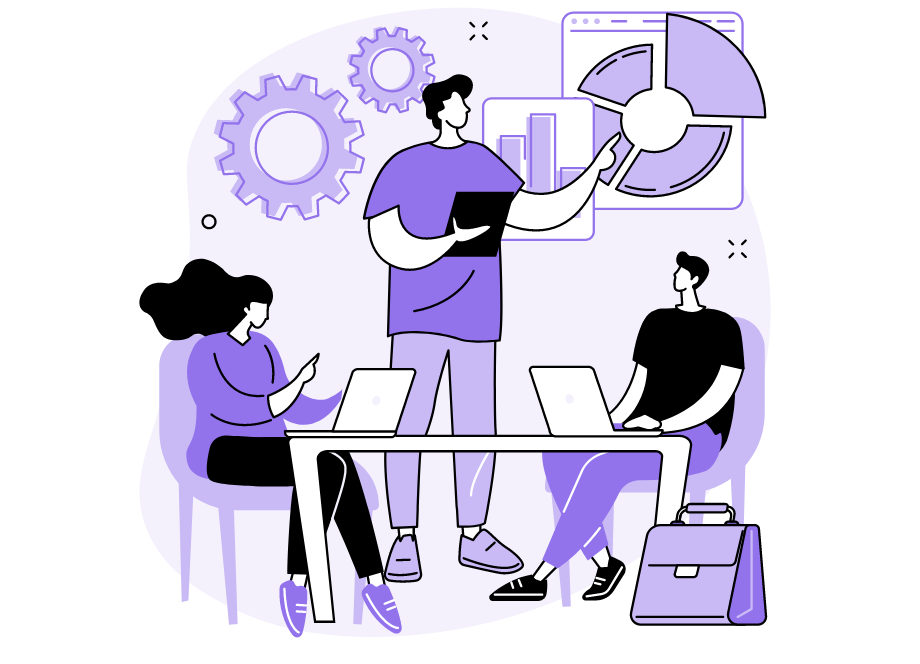
It’s no secret that teamwork and collaboration are good for business.
They can increase productivity, boost creativity and make the company more competitive in the marketplace.
So why do so many software development companies seem to struggle with it?
The answer is simple: collaboration isn’t always easy.
You have to find people who can work well together, then figure out how they’ll interact with other teams in your company.
It takes time and effort—two things that most software development teams don’t have much of.
In this article, we’ll explore some of the benefits of collaboration and show you a handful of real-life examples in the hope that they’ll motivate you to bring more teamwork into your software development projects.
So let’s see what they are!
Table of Contents
Collaboration improves team efficiency
It’s well-known that cross-functional collaboration is the key to efficiency and success for many companies. In fact, 83% of tech leaders think that cross-functional collaboration is crucial for successful software development, yet only 35% of them say investment in better cross-functional collaboration is a top company priority.
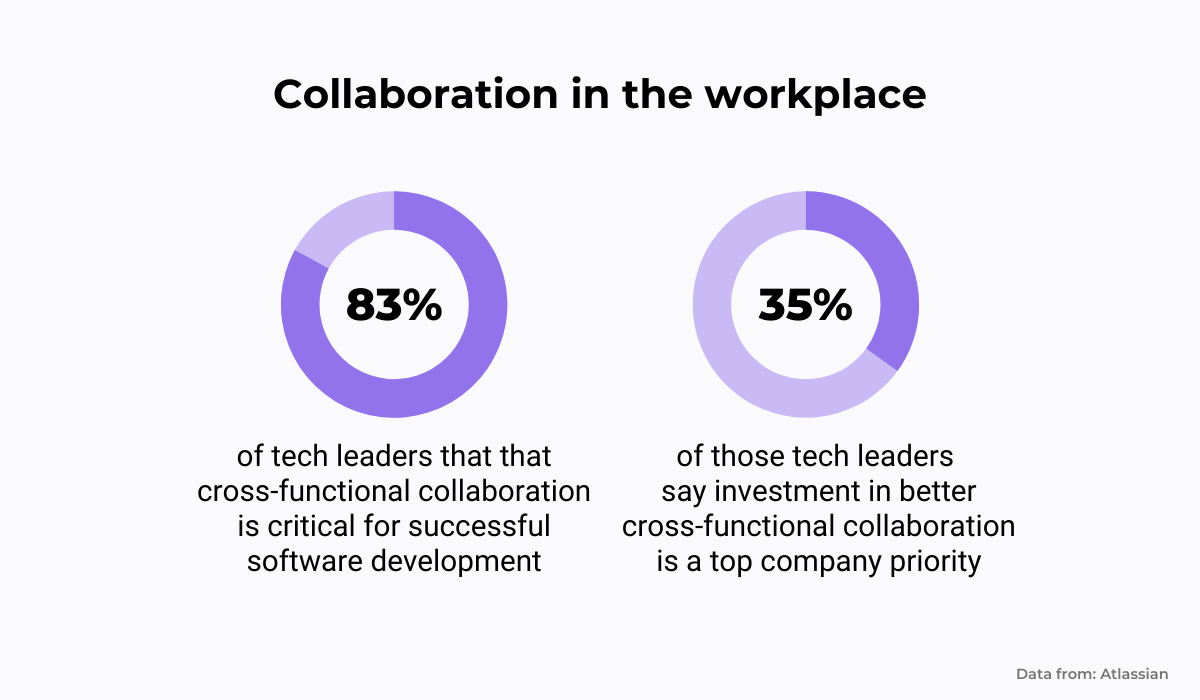
This means that more than two-thirds of companies aren’t investing in building the skills needed for effective collaboration across their projects.
Why is there such a disconnect?
The answer lies in the way we work. Most software development companies are organized around functional silos.
Business analysts are in one corner, developers occupy another, and QA testers yet another.
At the same time, most projects have hundreds of moving parts and it’s impossible for one person or team to know everything about all of them.
This can lead to miscommunication, missed deadlines, and a decrease in efficiency–important things that cost companies time and money.
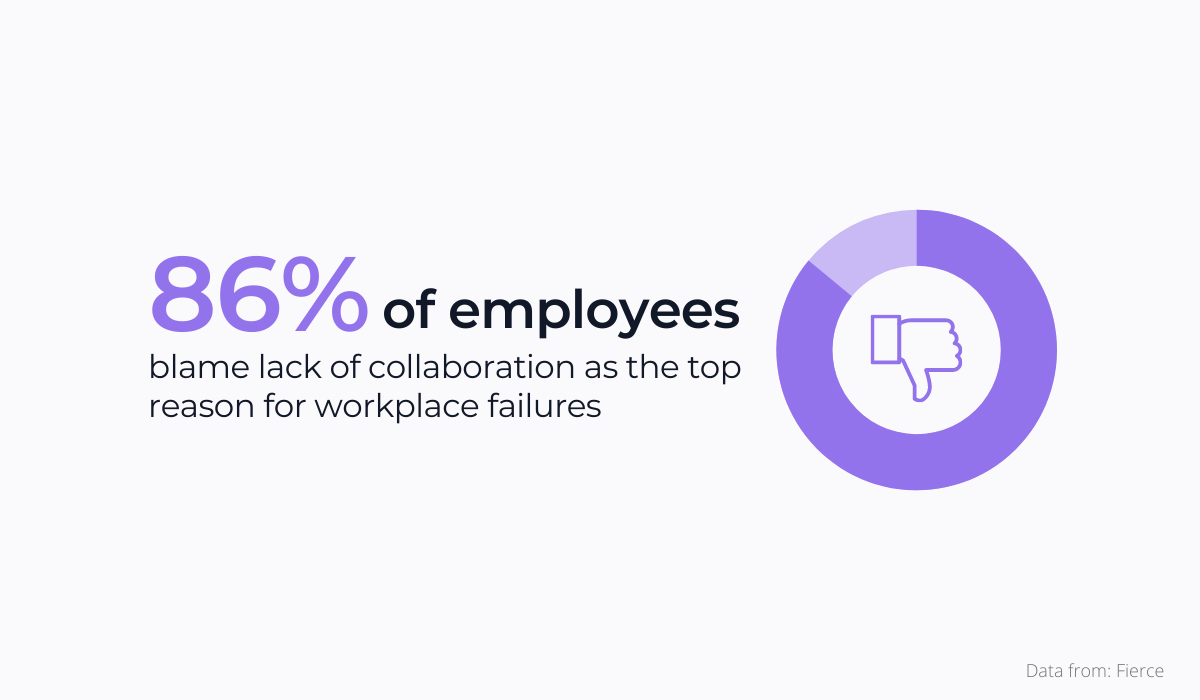
If you want your developers to be efficient so they can get your projects done on time and on budget, then you need to break down the walls between teams and departments so that they work together towards a common goal rather than against each other.
The solution? Create a more agile system where teams collaborate across disciplines and work together seamlessly.
Make your team cross-functional, rather than functional because that will bring together people from different departments to work together on a project.
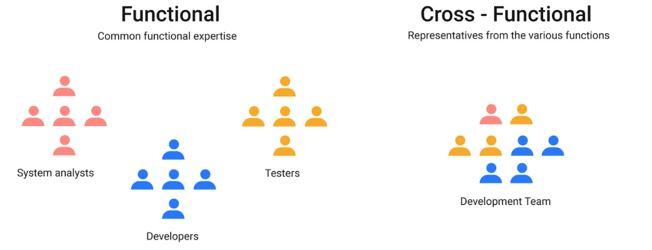
And the benefits of collaboration in terms of efficiency will be impressive, and will most likely include:
- Better decision making
- Less siloed thinking
- Improved communication
People with different perspectives can provide valuable insight into problems that may have otherwise gone unnoticed, and that means a more efficient way of working and less time wasted on trying to make the right decision.

Get unreal data to fix real issues in your app & web.
Team members with expertise in different disciplines will often look at problems from different angles, which can help uncover hidden assumptions or alternative solutions that would otherwise go overlooked.
This kind of collaboration also builds relationships between team members, which significantly enhances communication and improves efficiency.
As Alexander Glavatskiy, project manager at Steelkiwi inc, interestingly puts it, teams are like clocks.
Each part of the team is essential to the functioning of the whole and is interconnected with all other parts.
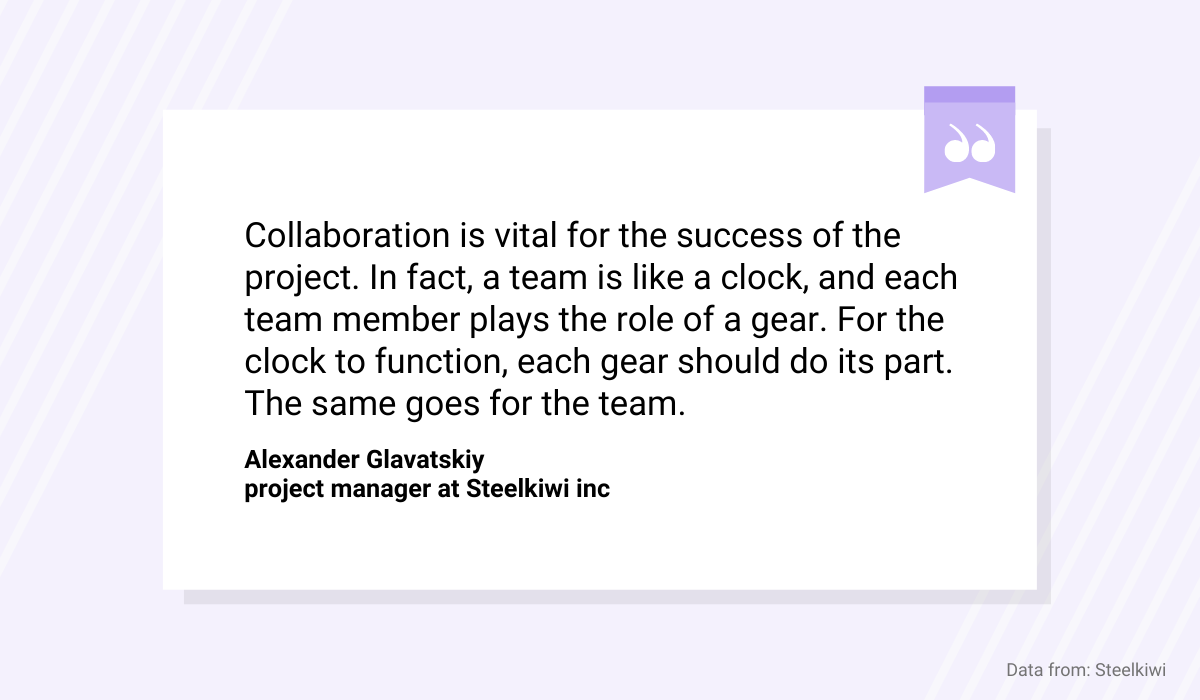
In other words, teams need to collaborate in order to be efficient and produce good quality software products.
Collaboration makes everyone more productive, which is a key factor for success. The more people you can get together to work on a project, the better your end result will be.
Collaboration increases code quality
Software is a team sport.
The idea of a lone programmer working out of a basement or garage to create something revolutionary may be romantic, but it doesn’t reflect the reality of modern software development.
In today’s world, quality software is created by teams of people working together to solve complex problems. And increasingly, the best teams are those that collaborate effectively.
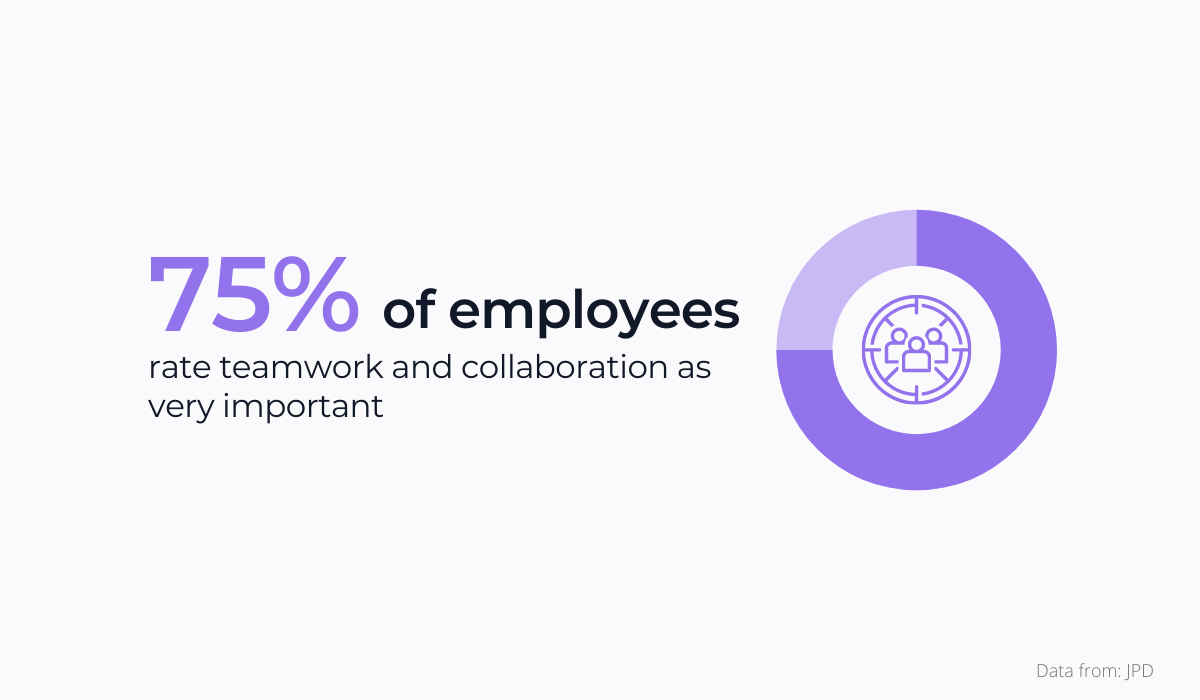
However, one of the most compelling reasons for encouraging collaboration among team members is that it leads to better code quality.
For instance, collaborative techniques such as pair programming and frequent code reviews, which are quite common in software development teams, are known to increase the likelihood of finding defects in the code.
Pair programming is a technique where two programmers work together at one computer, with one person (the driver) actively coding and the other person (the navigator) monitoring the code being written.
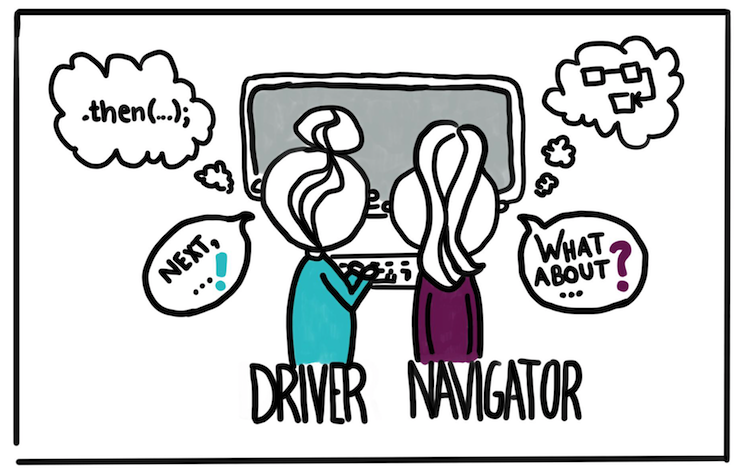
A good thing about this type of collaboration is that it makes sure that no bugs slip through the cracks during development.
In fact, the study has shown that pair programming results in 15% fewer bugs than code written by solo developers.
A lot of companies adopted this technique such as Facebook, Peloton, Stash, Grubhub, Snap, Vimeo, Meetup, and Shapeways, to name just a few.
In the picture below, you can see two Shapeways developers working side by side on a piece of code and reviewing each other’s work.
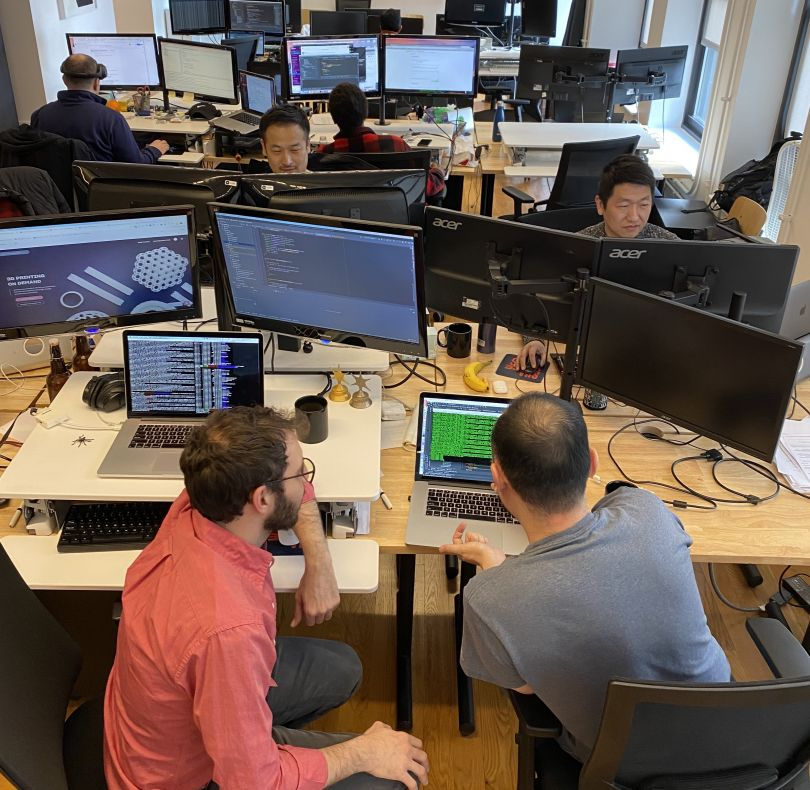
Code reviews are another form of collaborative work that helps improve code quality.
During a code review, developers discuss proposed changes in a pull request before they’re merged into the main branch of a codebase.
By reviewing each other’s code, developers can identify bugs or areas where the solution isn’t implemented correctly before those issues become visible to users or testers.
The benefits of these reviews are obvious: they ensure that new features and bug fixes are tested and reviewed, which makes it less likely that the codebase will be full of bugs when it goes live.
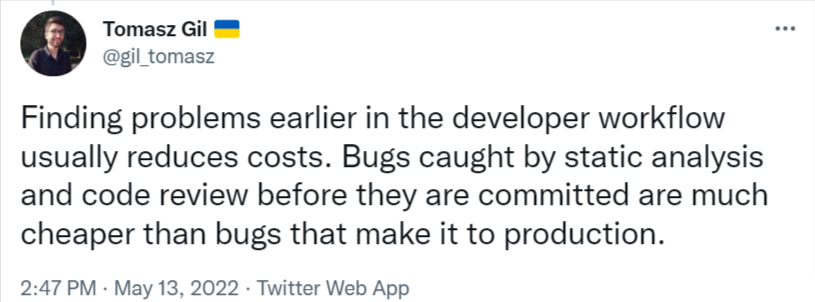
Code reviews also push developers to write more readable code because they’re forced to explain their intentions to peers, who may ask them questions about why they chose particular design patterns or architectural decisions.
Remember, the more eyes you have on a piece of code, the less likely it’s to contain bugs.
That’s why collaboration in software development teams is so important. It helps reduce human error and allows more people to review the code to increase its quality.
Therefore, bug-free software should be developed by many developers in a team rather than one person working alone.
Teamwork supports learning
In software development teams, learning is especially important since the skills and knowledge of each team member are so critical to the success of the team’s product.
Plus, no matter how experienced you are, there’s always something new to learn—whether it’s a new language, a new library, or just a better way to organize your code.
There are many ways that team learning occurs in software development teams.
For example, we already mentioned pair programming and code reviews and how important they are for code quality.
But they can be excellent for learning too.
While implementing these collaborative techniques, you can also observe how other developers approach and solve problems, which can give you invaluable insights into how they think and work.
Eventually, as you can see from the Quora thread below, that’ll make you a better engineer.

Additionally, team members often learn from each other while discussing problems they’re having by attending hackathons or similar collaborative events organized by the company.
Hackathons are great for learning among peers because they encourage rapid prototyping and experimentation with new technologies, which can help developers master new skills and techniques.
For example, Microsoft’s annual Hackathon is a unique event that brings together thousands of company developers, engineers, and designers from around the world to collaborate on a single goal: to create innovative software solutions.
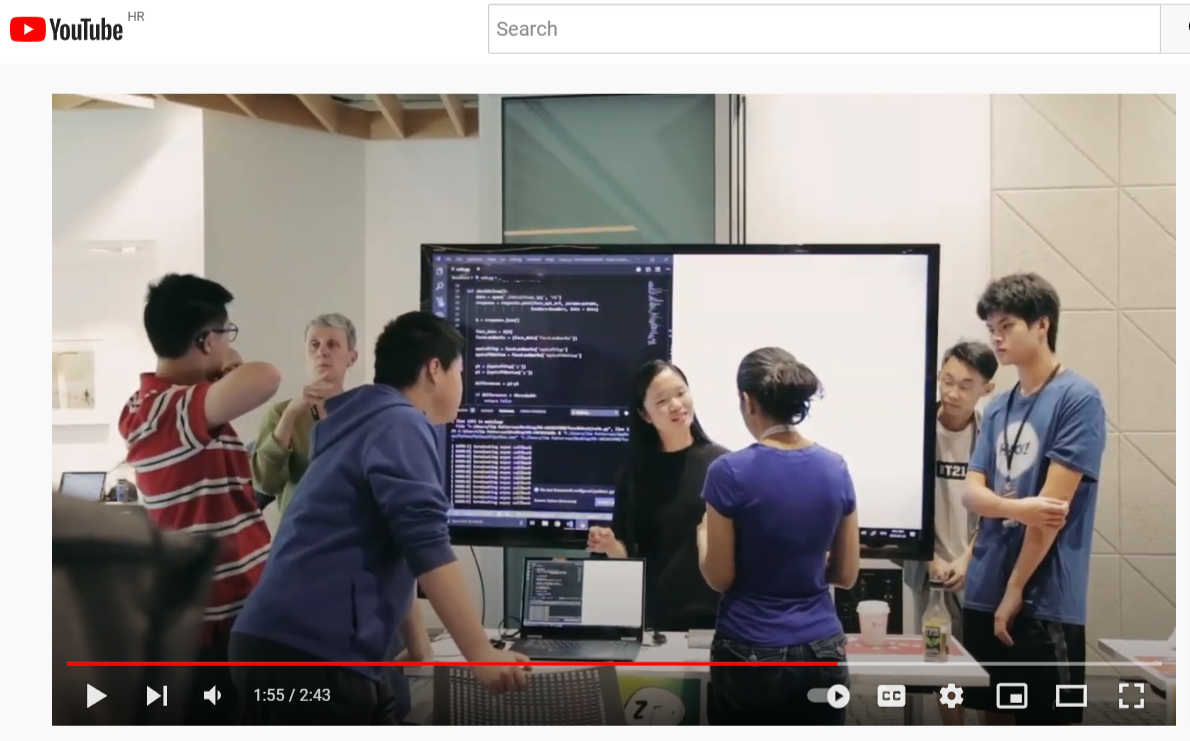
This is a great opportunity for developers to learn from each other because they can see how other people are tackling problems in their field.
It also helps them learn about the latest development tools and technologies that Microsoft has available.
If you don’t have a company-sponsored hackathon, there are plenty of other ways to get developers together for some peer-to-peer learning.
For example, when it’s structured as in Buffer, mentorship can also be a great source of learning through collaboration.
Buffer has created an environment where each team member has the opportunity to learn from others by participating in an extensive mentorship program.
And as you can see from the feedback of one of the participants, they’ve seen great results with it.

That’s because in their case mentorship is not only reserved for junior developers, but also for the ones in senior positions (e.g. a senior back-end engineer who wants to learn front-end can also find themselves in the position of a mentee).
But Buffer’s mentorship program doesn’t stop there. They also focus on building a community of support around mentors by bringing mentorship champions into the picture.
Mentorship champions are there to offer support and help other mentors be successful in their own mentoring relationships.
That way they’ve created a vast network of mentorship champions, mentors and mentees who can share their knowledge and experience with each other through collaboration.
Remember, it’s no longer enough to have a single expert in a team. Now, all team members have to be experts in their own right.
And the best way to achieve this is by learning and sharing knowledge among team members.
Teamwork inspires creativity
Creativity is a tricky thing. You can’t just sit down and expect to come up with something brilliant.
There are many factors that influence creativity, including the environment, your mindset, and even the people around you.
But one thing that’s often overlooked is teamwork and collaboration.
In fact, a study Collaboration 2020: hype or competitive advantage found that collaboration is an important driver of creativity and innovation and can create a “collision of new ideas”.
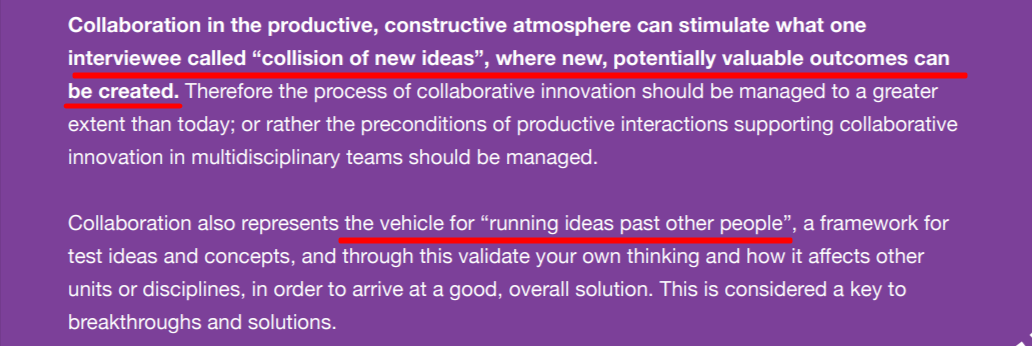
When you work on a project with other people, your brain naturally gets more creative as it tries to understand their perspective and work out how they’re thinking about things.
That’s why brainstorming sessions can be so effective—they force you to consider multiple perspectives at once.
Although brainstorming sessions per se are possible in the software development world, they don’t happen so often in practice.
But what does happen are sprint retrospectives, which represent a fertile ground for brainstorming and fostering creative thinking and innovation.
But what exactly are sprint retrospectives, you may wonder?
A sprint retrospective is a short meeting at the end of each sprint (or iteration).
Its purpose is to look back at what went well and not so well in the previous sprint, then identify improvements that can be made in future iterations to help everyone do their best work.
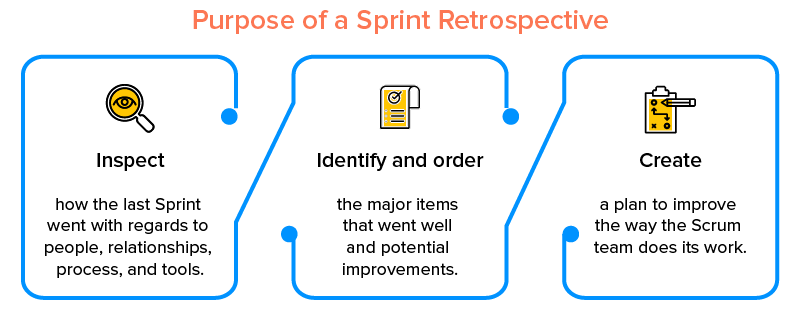
Software development teams often use various techniques such as brainstorming or affinity mapping in order to come up with ideas for improvement or new features that could be added in future iterations/sprints.
What makes that process so challenging is that developers are not always on the same page about how to do things.
They may have different ideas about ways to solve problems or complete tasks.
This can be frustrating at times, but it can also lead to creative solutions that they wouldn’t have come up with on their own.
Teamwork encourages us to see things from another person’s perspective, which can help us innovate and come up with fresh ideas. And there are numbers to back up this claim.
A collaboration-driven workplace is a more creative one, according to a study by Frost & Sullivan.
They found that companies that collaborate are 30% more innovative than those that don’t.
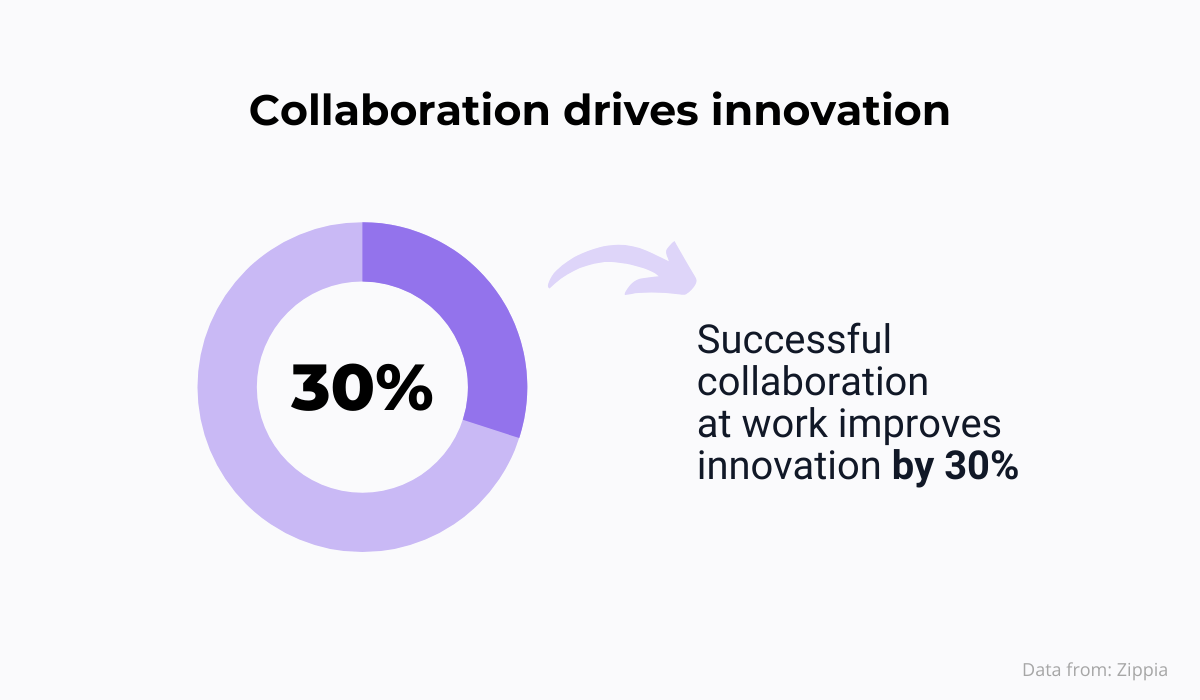
From everything that’s been said it’s clear that collaboration is not only about working in groups. It’s about sharing ideas, thoughts, and experiences with your team members.
It’s about bringing new perspectives into the work and challenging each other to see things from different angles.
If everyone works together as a team, there’s no telling what kind of incredibly creative things they’ll come up with! And that’s something worth considering.
Collaboration instills accountability among team members
With creativity out of the way, it’s time to say a few words about the last benefit on our list: accountability.
When people are required to account for their actions at each stage of the process, they tend to work more diligently than if they were working alone without any accountability measures in place.
This also means that they can’t blame anyone else for their mistakes or failures. In other words, when something goes wrong, they have to be willing to admit it and accept responsibility.
What’s interesting is that while some people see accountability as being a good thing, the majority still don’t view it as a positive experience.
In fact, 80% of employees view accountability as a punishment rather than a way to improve performance.
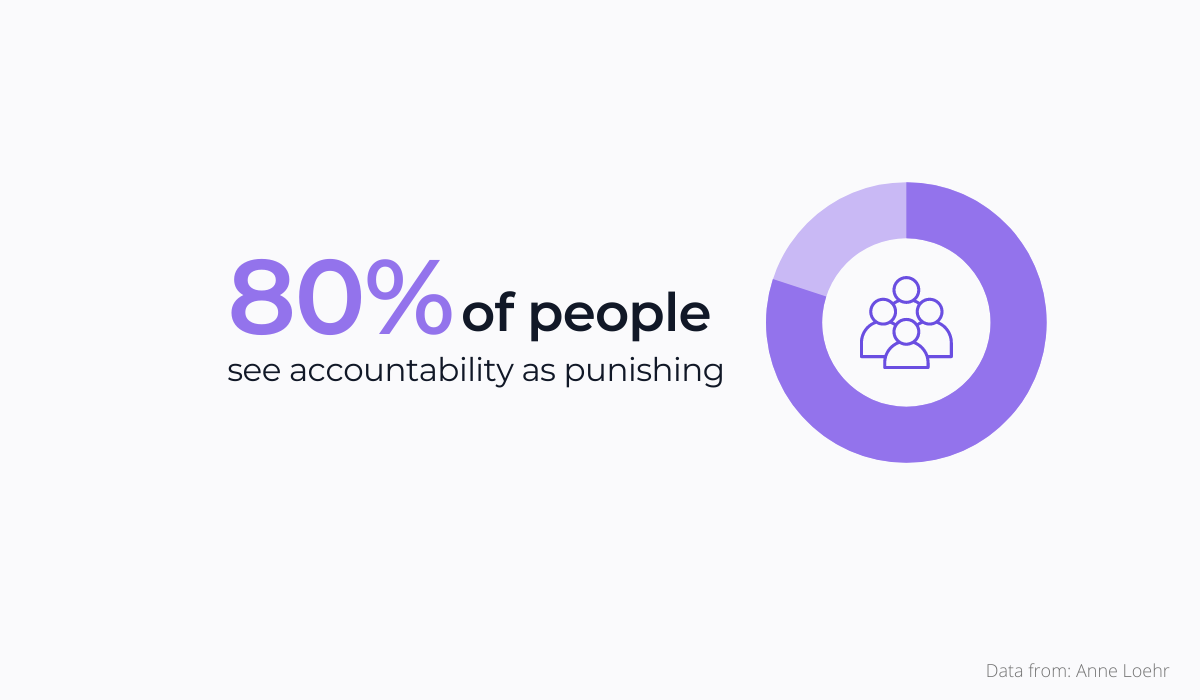
The good news is that it doesn’t have to be like that.
Some teams have adopted a “no blame” culture, where people are encouraged to point out what went wrong rather than who did it.
In fact, companies such as Google, Etsy, or Hootsuite have a blameless post-mortem process for when something fails.
But what exactly is a blameless postmortem?
In a nutshell, it’s a meeting where everyone comes together to discuss what happened and how they can avoid it from happening again in the future.
The idea is simple: when something breaks down, instead of pointing fingers and focusing on who is to blame, the team focuses on what happened, how it happened, why it happened, and how to prevent it from happening again.
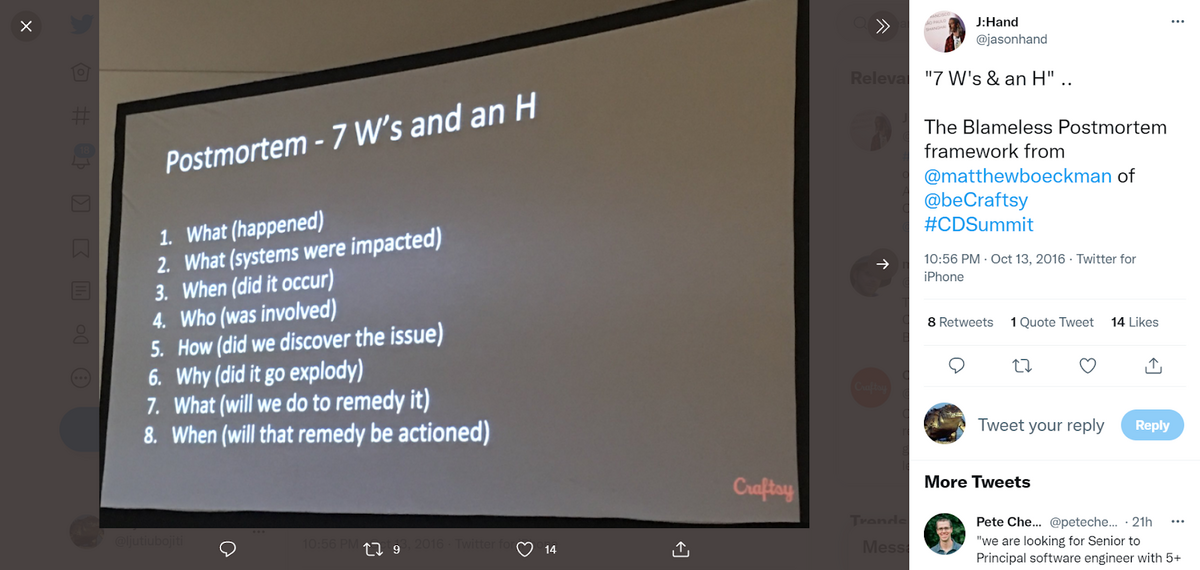
This doesn’t mean that no one takes responsibility for their actions—it just means that there’s no blame involved in the process.
This can be difficult for some people but it can also lead to some surprising results as well.
If everyone knows that they won’t be censured for making mistakes, then they’re more likely to speak up when something goes wrong and consider themselves accountable for their actions.

Capture, Annotate & Share in Seconds with our Free Chrome Extension!
This helps develop an environment where everyone feels safe enough to take risks and experiment with new ideas without fear of being punished if things don’t work out as planned.
It also creates a culture of trust and cooperation.
When people work together on projects, they know that their colleagues are depending on them to do their part of the work, which eventually promotes excellence and high standards of quality.
Conclusion
Teamwork and collaboration are the heart of software development.
The best software is always built by teams, not individuals.
That’s why, in this article, we tried to highlight some of the most important benefits that team collaboration brings to the table.
We hope that it will inspire you to improve teamwork and collaboration in your own company, especially as they can enhance productivity, creativity, and quality of work.
